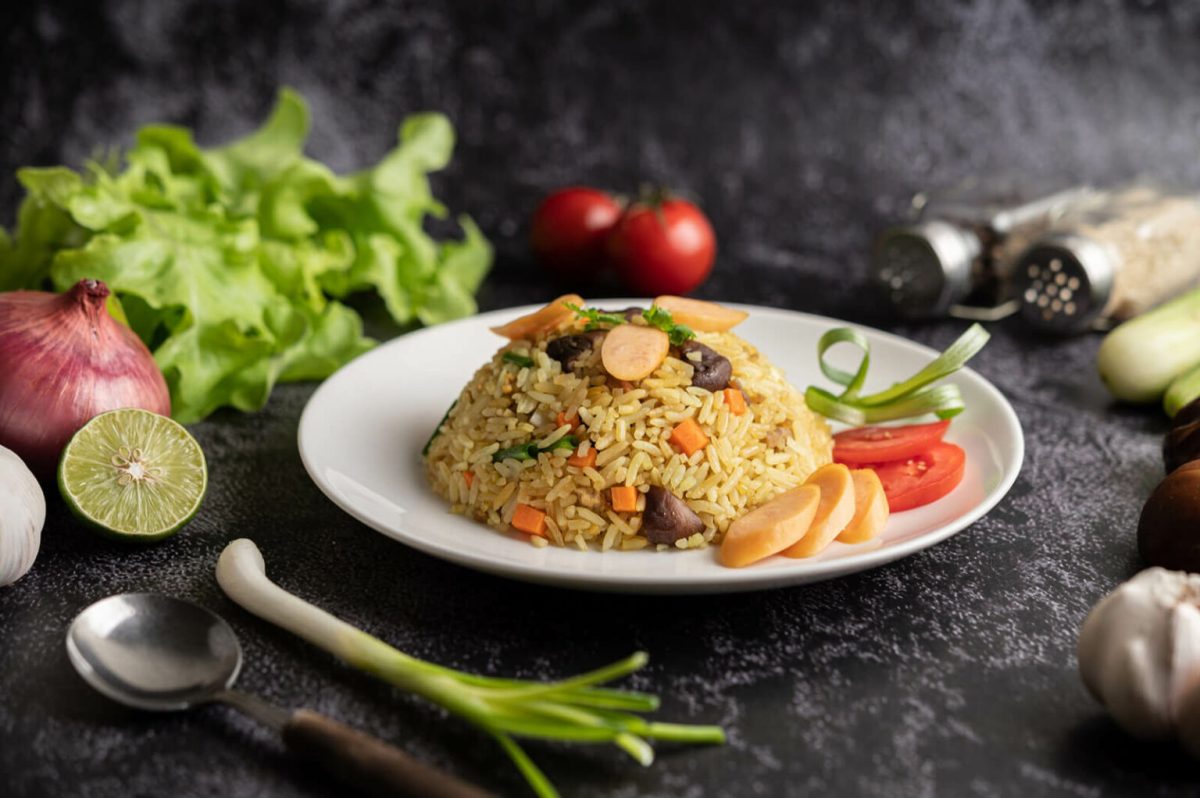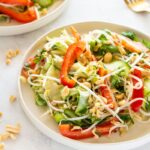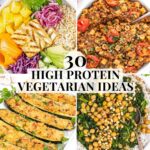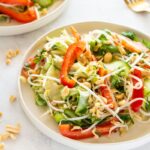Embark on a vibrant culinary journey with Low-Calorie Raw Vegan Recipes for Weight Loss! Discover a world of fresh, flavorful, and surprisingly satisfying meals designed to help you achieve your weight loss goals without sacrificing taste or nutritional value. Imagine vibrant salads bursting with color, creamy raw vegan cheesecakes that melt in your mouth, and energizing breakfasts that fuel your day. This guide unveils the secrets to effortless weight management through the power of raw vegan cuisine, offering simple recipes, meal plans, and expert tips to make healthy eating a joyful experience.
From quick and easy lunches to decadent yet low-calorie desserts, we’ll explore a diverse range of recipes featuring the best low-calorie raw vegan ingredients. Learn to harness the nutritional power of nutrient-dense vegetables, fruits, and seeds, while mastering techniques to create stunning dishes that are both visually appealing and incredibly delicious. We’ll address common challenges and offer solutions to ensure your transition to a raw vegan lifestyle is smooth and sustainable, setting you on the path to a healthier, happier you.
Popular Low-Calorie Raw Vegan Ingredients
Embarking on a raw vegan diet for weight loss requires a mindful selection of ingredients. Prioritizing low-calorie, nutrient-dense options is key to achieving sustainable results while satisfying your hunger and maintaining energy levels. This section highlights some of the most popular choices and their benefits.
Top 10 Low-Calorie Raw Vegan Ingredients for Weight Loss
Choosing the right ingredients is paramount for successful weight loss on a raw vegan diet. The following table details ten commonly used options, their caloric content per serving, nutritional benefits, and recipe examples. Remember that serving sizes can vary, so always check nutrition labels.
| Name | Calories per Serving (approx.) | Nutritional Benefits | Recipe Examples |
|---|---|---|---|
| Cucumber | 15-20 (1 cup sliced) | High in water content, promoting hydration and satiety; good source of vitamin K and potassium. | Cucumber and avocado salad, gazpacho |
| Spinach | 7 calories (1 cup raw) | Excellent source of vitamins A, C, and K; rich in iron and antioxidants. | Green smoothies, spinach wraps |
| Lettuce (various types) | 5-10 calories (1 cup chopped) | Provides fiber and vitamins; contributes to feelings of fullness. | Salads, wraps, lettuce cups |
| Celery | 10 calories (1 cup chopped) | Low in calories, high in fiber; contains antioxidants and vitamins. | Celery sticks with hummus, vegetable platters |
| Bell Peppers (various colors) | 20-30 calories (1/2 medium pepper) | Rich in vitamins A and C; provide antioxidants and fiber. | Bell pepper salsa, stuffed bell peppers (with raw fillings) |
| Tomatoes | 20-25 calories (1 medium tomato) | Good source of lycopene (antioxidant), vitamin C, and potassium. | Salads, gazpacho, tomato slices with basil |
| Zucchini | 20 calories (1/2 cup sliced) | Low in calories, high in water content; good source of vitamin C and potassium. | Zucchini noodles (zoodles), raw zucchini salad |
| Broccoli | 30-35 calories (1 cup florets) | Excellent source of vitamins C and K; high in fiber and antioxidants. | Raw broccoli salad, broccoli slaw |
| Avocado | 160 calories (1/2 avocado) | Rich in healthy fats, fiber, and potassium; contributes to satiety. Note: Higher in calories than others on this list but offers significant nutritional benefits. | Guacamole, avocado toast (whole-wheat), various salads |
| Berries (strawberries, raspberries, blueberries) | 30-50 calories (1/2 cup) | Packed with antioxidants, vitamins, and fiber; naturally sweet. | Smoothies, added to salads or yogurt (vegan) |
Comparison of Raw Vegan Protein Sources
Protein is crucial for weight management and overall health. This table compares the nutritional profiles of five popular raw vegan protein sources. Note that these values are approximate and can vary based on the specific product.
| Protein Source | Protein (grams per serving) | Calories per serving (approx.) | Fat (grams per serving) | Fiber (grams per serving) |
|---|---|---|---|---|
| Hemp Seeds | 10g (1/4 cup) | 160 | 14g | 1g |
| Chia Seeds | 4g (1 tbsp) | 60 | 5g | 1g |
| Sunflower Seeds | 6g (1/4 cup) | 200 | 18g | 1g |
| Pumpkin Seeds | 7g (1/4 cup) | 150 | 13g | 2g |
| Sprouted Almonds | 6g (1/4 cup) | 200 | 18g | 3g |
Versatility of Low-Calorie Raw Vegan Vegetables
Five common low-calorie raw vegan vegetables offer incredible versatility in recipe creation. Their diverse textures and flavors allow for creative culinary explorations.
Cucumber: The crisp, refreshing nature of cucumbers makes them ideal for salads, gazpacho (a chilled Spanish soup), and as a refreshing addition to sandwiches. Their mild flavor complements a wide array of other ingredients.
Bell Peppers: The vibrant colors and sweet, slightly crisp texture of bell peppers add visual appeal and flavor to any dish. They can be sliced for salads, diced for salsas, or used as colorful containers for other raw ingredients.
Zucchini: Zucchini’s mild flavor and soft texture make it surprisingly versatile. It can be spiralized into zoodles (zucchini noodles) for a low-carb pasta alternative, thinly sliced for salads, or diced for raw vegetable platters.
Spinach: Spinach’s slightly earthy flavor and tender leaves are perfect for adding to smoothies, wraps, or as a base for salads. Its nutritional density makes it a valuable addition to any raw vegan meal.
Tomatoes: Juicy and flavorful, tomatoes are a staple in raw vegan cuisine. They are delicious sliced in salads, blended into gazpacho, or used as a base for raw sauces and dips. The different varieties offer varying levels of sweetness and acidity.
Troubleshooting Common Raw Vegan Challenges

Embarking on a raw vegan diet for weight loss can be incredibly rewarding, but it’s not without its hurdles. Many individuals encounter challenges during the transition, impacting their adherence and overall success. Understanding these common pitfalls and implementing effective strategies is crucial for long-term weight loss and overall well-being. This section addresses these challenges, offering practical solutions and recipes to help you navigate this dietary shift smoothly.
Nutrient Deficiencies
Nutrient deficiencies are a common concern when transitioning to a raw vegan diet. Restricting cooked foods eliminates certain readily bioavailable nutrients. Careful planning and mindful food choices are essential to avoid these deficiencies. For example, a lack of B12 is common in vegan diets, as this vitamin is primarily found in animal products. Therefore, supplementation with B12 is often recommended. Other potential deficiencies include iron, calcium, zinc, and vitamin D. Addressing these requires a strategic approach involving diverse food choices and, in some cases, supplementation.
Maintaining Energy Levels
Sustaining sufficient energy levels on a raw vegan diet can be challenging initially. The body needs time to adjust to the new fuel source. Many raw vegans report feeling sluggish or experiencing low energy in the first few weeks. This can be attributed to several factors, including lower calorie intake, changes in blood sugar levels, and the body’s adjustment to a different nutritional profile. Strategic meal planning, focusing on nutrient-dense foods, and adequate hydration can help alleviate this. Including foods rich in healthy fats, such as avocados and nuts, can provide sustained energy throughout the day.
Creating a Balanced Meal Plan
A balanced raw vegan diet for weight loss isn’t just about eating raw vegetables; it’s about achieving a harmonious blend of macronutrients and micronutrients. Imagine a vibrant plate bursting with colors and textures. This should include a variety of leafy greens, providing essential vitamins and minerals; colorful fruits offering natural sweetness and antioxidants; and healthy fats from avocados, nuts, and seeds for satiety and sustained energy. Legumes, sprouted seeds, and seaweed contribute valuable protein and other nutrients. Planning meals around this diverse palette ensures you’re not only losing weight but also thriving nutritionally.
Recipe: Nutrient-Rich Raw Vegan Salad
This salad provides a visual representation of a balanced raw vegan meal. Imagine a large bowl overflowing with deep green kale, vibrant orange carrots shredded into thin ribbons, and crunchy red bell peppers diced into small, bite-sized pieces. Sprinkled generously over this colorful base are sunflower seeds, providing a satisfying crunch and a boost of healthy fats. A creamy avocado dressing, made by blending ripe avocado with a squeeze of lemon juice, a dash of sea salt, and a touch of water until smooth and creamy, binds everything together. The vibrant colors and diverse textures make this salad not only visually appealing but also nutritionally complete. This provides a balanced intake of vitamins, minerals, and healthy fats. The preparation is straightforward: wash and chop all the vegetables, toss them together in the bowl, and drizzle the avocado dressing.
Overcoming Plateaus
Weight loss plateaus are common, regardless of the diet. On a raw vegan diet, plateaus can be caused by several factors, including hormonal fluctuations, reduced calorie intake, or a lack of variety in the diet. To overcome these plateaus, consider increasing physical activity, reviewing your calorie intake to ensure it’s still appropriate for your goals, and incorporating a wider range of raw vegan foods to stimulate your metabolism and ensure you’re receiving all the necessary nutrients.
Achieving your weight loss aspirations doesn’t have to mean bland, boring meals. This exploration of Low-Calorie Raw Vegan Recipes for Weight Loss has revealed a treasure trove of delicious and nutritious options, proving that healthy eating can be both exciting and satisfying. By embracing the vibrant colors, textures, and flavors of raw vegan cuisine, you can transform your relationship with food and embark on a sustainable weight loss journey. Remember, the key lies in mindful eating, balanced nutrition, and the joy of creating delicious, healthy meals that nourish your body and soul. Start your transformation today!
FAQ
Can I build muscle on a raw vegan diet?
Yes, but it requires careful planning to ensure sufficient protein intake from sources like nuts, seeds, and legumes. Consider consulting a nutritionist.
Are raw vegan diets suitable for everyone?
No, individuals with certain medical conditions or nutritional deficiencies should consult their doctor before adopting a raw vegan diet.
How do I prevent nutrient deficiencies on a raw vegan diet?
Focus on variety, consume a wide range of fruits, vegetables, nuts, and seeds, and consider supplementation if advised by a healthcare professional.
What about fiber intake on a raw vegan diet?
Raw vegan diets are naturally high in fiber, which is beneficial for digestion and weight management. However, increase your water intake gradually to avoid digestive discomfort.


